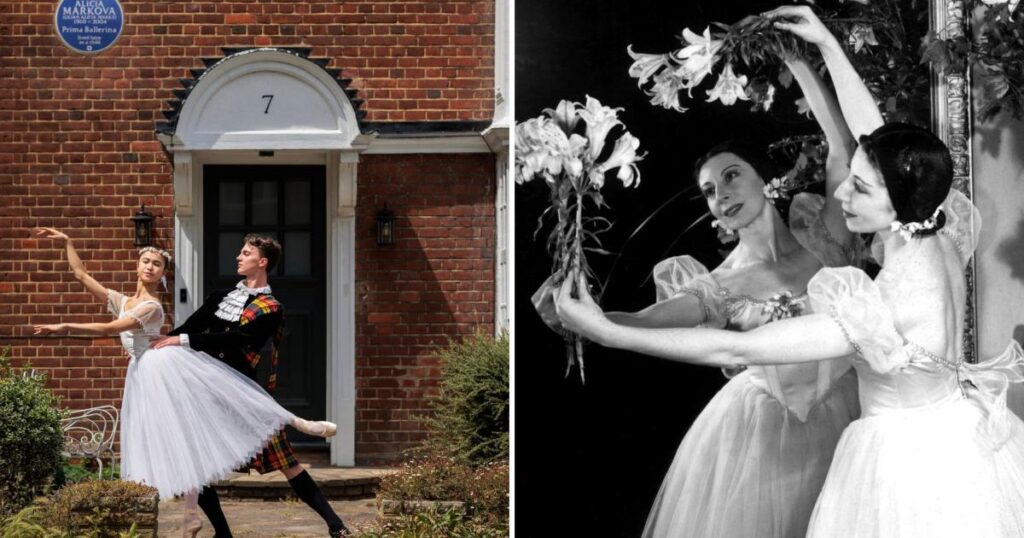Young dancers from The English National Ballet attended the unveiling of a blue plaque outside her childhood home in Cascade Avenue on Tuesday.
Markova became the first Prima Ballerina of what is now The Royal Ballet, and toured the world as a star ballerina, but she was born Lilian Marks in a flat in Finsbury Park in 1910.
Dame Alicia Markova in 1957 during rehearsals at the Royal Opera House. (Image: PA) When her father’s business prospects improved, the family moved to a large new home in Muswell Hill where she lived with her three younger sisters from the age of four until 12.
As a child she was warned her legs were dangerously weak and advised to take up dancing lessons. But her talents soon outgrew Miss Dorothy Thorn’s Academy in Muswell Hill, and she began studying ballet with Princess Serafina Astafieva, a Russian ballerina based in Chelsea.
The Princess was a retired dancer with the legendary Ballet Russes and by 13 Markova’s talent had been spotted by dance impresario Sergei Diaghilev and she was on her way to Monaco with a governess and a chaperone to join the company.

English Heritage Blue Plaques historian Susan Skedd said: “It was in Cascade Avenue that she learned to dance and developed this amazing talent.
“She took up dancing on medical advice, the doctor recommended it to strengthen her legs. They said she had flat feet, knock knees and weak legs!
“She was a scrap of a thing, and she was really afraid of having to deal with leg splints or be in a wheelchair and absolutely determined to develop her back strength.”
Markova’s father paid for private dance lessons and built a stage in the garden for the budding dancer, who made her stage debut aged 10 as Salome in the panto Dick Whittington and his Cat.
He was Jewish and Susan Skedd says: “All dancers had exotic Russian names given to them at the time, but Markova was born Lily Marx and although not a practising Jew was aware of her Jewish heritage.
“She became the first British-born Prima Ballerina which is extraordinary at a time when antisemitsm was rife.”
Once at the Ballet Russes in 1925, Markova’s career “took off like a rocket”.
“She had an extraordinary education the south of France. At first she played child roles specially choreographed for her, then she joined the corps de ballet, she met Stravinsky and had costumes designed by Picasso.
“The choreographers adored devising routines for her because she was petite and incredibly light on her feet.”

She died in 2004 at the age of 94.
“She this amazing international career and danced into her 50s,” adds Susan Skedd.
“When she started out, only Russia and France had a tradition of ballet, she was taught by the very best and passed it on – becoming a bridge between Russian and English ballet.
“She saw herself as a publicist for ballet and believed passionately that it should not be restricted to the elite but enjoyed by everyone.
“Her bust stands in teh foyer at English National Ballet and they are immensely proud of being founded by her but she really does deserve to be known not just in ballet circles.
“Her childhood home was so central to developing her talent and it’s wonderful to put a plaque up where someone started off their career.
“How many young people standing outside the house will be inspired by knowing it’s where an international star grew up and learned her craft?”




